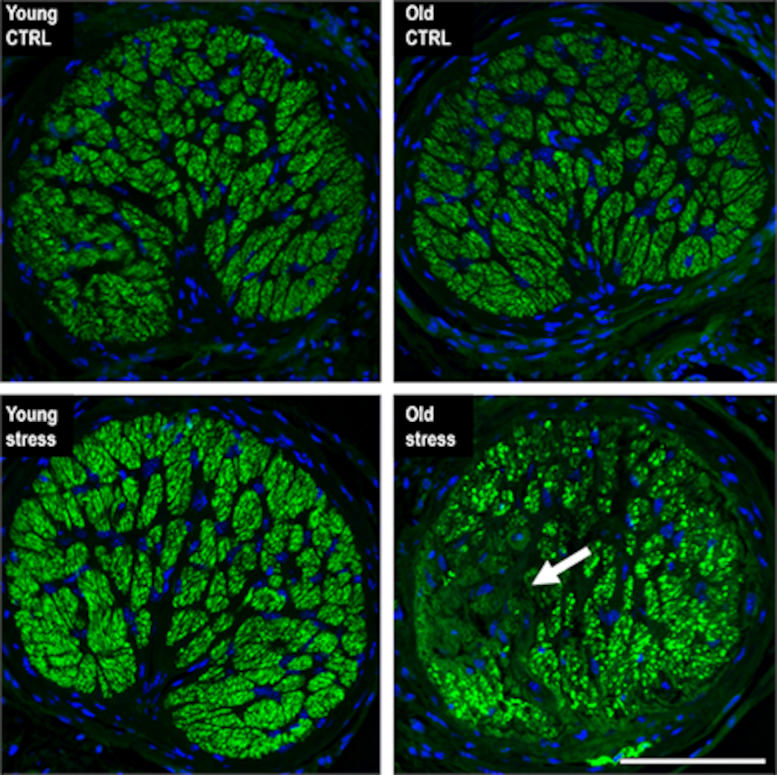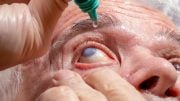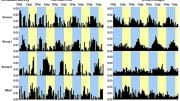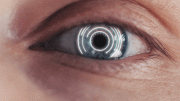
Glaucoma is a group of eye diseases that can cause damage to the optic nerve and result in vision loss. It is often caused by an increase in pressure within the eye, which can damage the nerve fibers of the optic nerve.
Stress-induced retinal aging produces symptoms similar to those that occur naturally with aging.
New research from the University of California, Irvine, indicates that aging plays a significant role in the death of retinal ganglion cells in glaucoma and that new treatment methods for glaucoma patients can target these unique pathways.
The study was published in Aging Cell and conducted by Dorota Skowronska-Krawczyk, Ph.D., and her colleagues. The research delves into the epigenetic and transcriptional changes that occur in the aging retina and how stress, such as increased intraocular pressure, can cause the retina to undergo similar changes to natural aging. Furthermore, the study shows that repetitive stress in young retinal tissue can lead to accelerated aging.
Aging is a universal process that affects all cells in an organism. In the eye, it is a major risk factor for a group of neuropathies called glaucoma. Because of the increase in aging populations worldwide, current estimates show that the number of people with glaucoma (aged 40-80) will increase to over 110 million in 2040.

When the UCI-led team investigated the optic nerve head of eyes treated with mild pressure elevation, they noted that in the young optic nerve head, there was no sign of loss of axons. However, in the optic nerves of old animals, significant sectorial loss of axons was observed similar to the phenotype commonly observed in glaucoma patients. Credit: UCI School of Medicine
“Our work emphasizes the importance of early diagnosis and prevention as well as age-specific management of age-related diseases, including glaucoma,” said Skowronska-Krawczyk. “The epigenetic changes we observed suggest that changes on the chromatin level are acquired in an accumulative way, following several instances of stress. This provides us with a window of opportunity for the prevention of vision loss, if and when the disease is recognized early.”
In humans, IOP has a circadian rhythm. In healthy individuals, it oscillates typically in the 12-21 mmHg range and tends to be highest in approximately two-thirds of individuals during the nocturnal period. Due to IOP fluctuations, a single IOP measurement is often insufficient to characterize the real pathology and risk of disease progression in glaucoma patients. Long-term IOP fluctuation has been reported to be a strong predictor for glaucoma progression. This new study suggests that the cumulative impact of the fluctuations of IOP is directly responsible for the aging of the tissue.
“Our work shows that even moderate hydrostatic IOP elevation results in retinal ganglion cell loss and corresponding visual defects when performed on aged animals,” said Skowronska-Krawczyk. “We are continuing to work to understand the mechanism of accumulative changes in aging in order to find potential targets for therapeutics. We are also testing different approaches to prevent the accelerated aging process resulting from stress.”
Researchers now have a new tool to estimate the impact of stress and treatment on the aging status of retinal tissue, which has made these new discoveries possible. In collaboration with the Clock Foundation and Steve Horvath, Ph.D., from Altos Labs, who pioneered the development of epigenetic clocks that can measure age based on methylation changes in the DNA of tissues, it was possible for researchers to show that repetitive, mild IOP elevation can accelerate epigenetic age of the tissues.
“In addition to measuring vision decline and some structural changes due to stress and potential treatment, we can now measure the epigenetic age of retinal tissue and use it to find the optimal strategy to prevent vision loss in aging,” said Skowronska-Krawczyk.
Reference: “Stress induced aging in mouse eye” by Qianlan Xu, Cezary Rydz, Viet Anh Nguyen Huu, Lorena Rocha, Claudia Palomino La Torre, Irene Lee, William Cho, Mary Jabari, John Donello, David C. Lyon, Robert T. Brooke, Steve Horvath, Robert N. Weinreb, Won-Kyu Ju, Andrzej Foik and Dorota Skowronska-Krawczyk, 17 November 2022, Aging Cell.
DOI: 10.1111/acel.13737
The study was funded by the National Institutes of Health, the Foundation for Polish Science, and the European Union under the European Regional Development Fund. Authors would like to acknowledge the support of the Research to Prevent Blindness Foundation for the Department of Ophthalmology at UCI.









Be the first to comment on "Repeated Stress Can Accelerate Aging of the Eye"